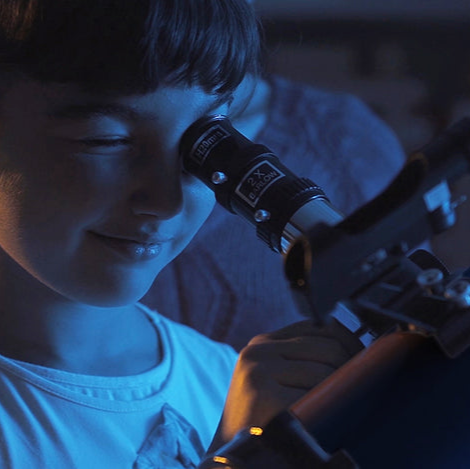It’s a steady presence in all of our lives, but few people take the time to truly get to know Earth’s closest neighbor.
In this recurring blog post, accomplished astronomer and astrophotographer Dr. Howard Eskildsen will take readers on a journey across the luminous face of the Full Moon.
Through images and words, Eskildsen will explore the legions of geological formations that give the Moon its distinct personality. His in-depth information will give context to the features that pop to life when one views our oft romanticized satellite through a telescope or other optical aid.
From its contribution to our tides to the artistic inspiration it provides, the Moon’s influence on Earth is profound, and it deserves a deeper look.

Section 38: Eratosthenes to Gambart
At the top of the image the crater Eratosthenes appears like a smaller version of Copernicus. Though only 60 km in diameter, Eratosthenes is structured like Copernicus with central peaks, flat floor, terraced inner rim and a continuous ejecta apron outside the outer rim. However, it lacks rays and its features appear softer and more subdued than those of Copernicus. Why?
Eratosthenes is older and has had more time for multiple meteor impacts to erode or garden its surface. Similarly its rays have vanished due to the erosive forces. It is estimated that it takes about a billion years to erase a crater’s rays, so Eratosthenes must be considerably older than Copernicus. By using Apollo 14 rock samples returned to Earth, scientists estimated the age of Copernicus to be 800 million years. Wow! No eyes existed on Earth to witness the cosmic crash that created it. Eratosthenes then is much, much older. It is estimated to be around 3.2 billion years old; only the most primitive forms of life inhabited Earth when it was formed.
The two earliest lunar geological time periods are named after these two craters. The Copernican period runs from current day to approximately 1.1 billion years ago and is defined by craters with bright rays. The Eratosthenian period runs from 1.1 billion to 3.2 billion years ago and is characterized by distinct craters without rays. Some volcanic activity occurred during this time. It was slowly ending but had not totally ceased during this period.

Eratosthenes is bounded on three sides by flat mare plains of basaltic lava, including Sinus Aestuum. Could encroaching lavas have partly buried part of its ejecta and rays? A close look at higher resolution shows that its ejecta is in fact littered over the mare basalts, so the last layers of lava are older than Eratosthenes, though in general they appear very close in age. As noted above, those lavas and Eratosthenes are overlain by rays and secondary craters from Copernicus, confirming that Copernicus is younger than both features. In contrast, poor Stadius is obviously older than the lava flows which nearly obliterated it. Only portions of its outer rim still rise above the basalt.
Other volcanism is visible in the form of pyroclastics (fragmented rocks and ash from volcanic explosions) thought to have been the last gasps of volcanism in the region. The pyroclastics on this image appear to have been partly covered by rays from Copernicus, so are obviously older. Much later humans left an unintended mark (not visible in telescopes) in the region southwest of the pyroclastics. Surveyor 2 tumbled out of control during a course correction rocket misfire and crashed onto Mare Insularum.
Two craters appear to the left and below the Surveyor 2 impact site. They are Gambart C (12.2 km) and Gambart B (11.5 km) and are classified as simple craters since they lack central peaks and have smooth inner rims. Simple craters are generally less than 15 km in diameter whereas craters over 20 km generally have characteristics like Eratosthenes and Copernicus and are known as complex craters.
Finally, other ruins of craters lie at the bottom of the image. Gambart appears as an irregular ring inundated by mare basalt. Mösting appears as the least worn crater on the lower portion of the image, but Sömmering and Schröter were hideously deformed long before they were covered by basalts. Why? The explanation will follow in subsequent quadrant descriptions.
As an Amazon Associate we earn from qualifying purchases.















Leave a comment
All comments are moderated before being published.
This site is protected by hCaptcha and the hCaptcha Privacy Policy and Terms of Service apply.